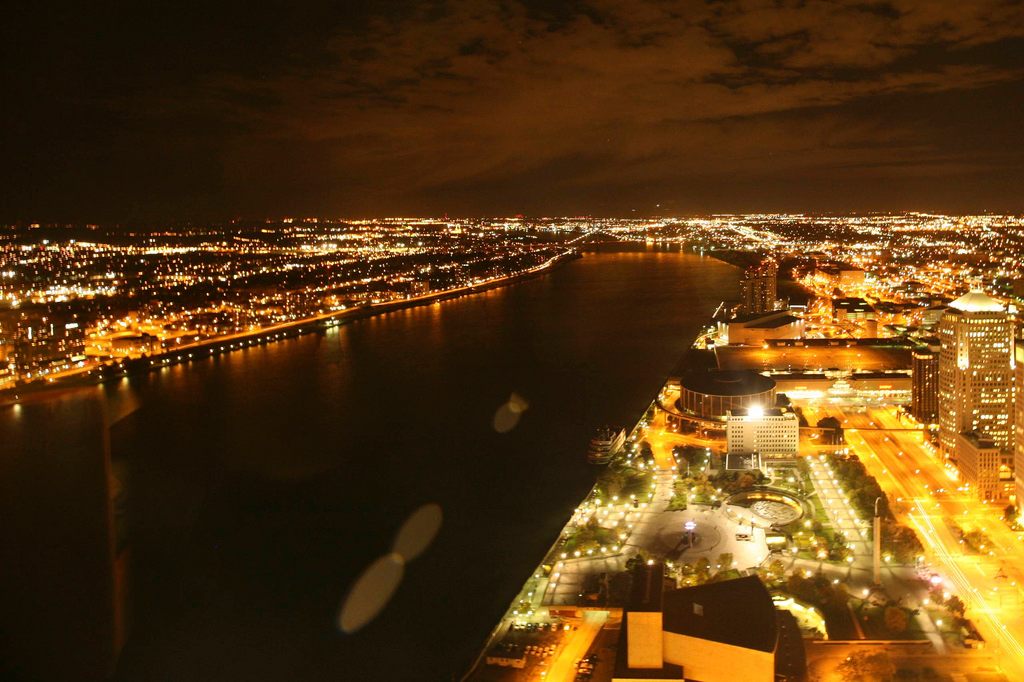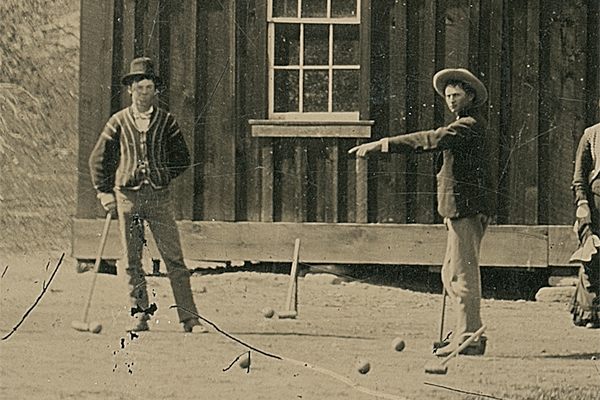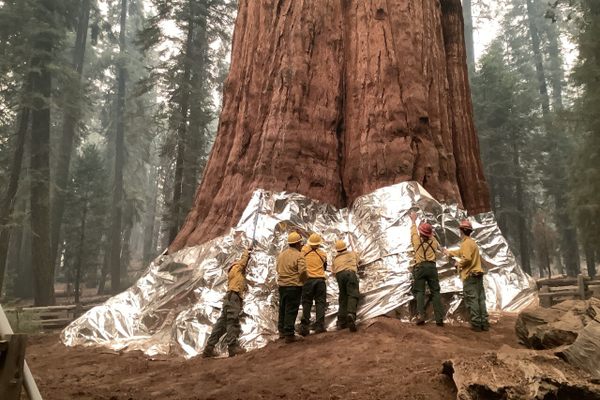How Detroit Exorcised Devil’s Night

Detroit by night. (Photo: Ed Schipul/flickr)
Some call it Mischief Night, others Cabbage Night but the night before Halloween, with its long history of pranks escalating into chaos and destruction, is perhaps best known as Devil’s Night. Halloween tricks are nothing new, but Devil’s Night in Detroit has historically brought out some of the worst vandalism and arson.
Residents in the areas hardest hit by Devil’s Night decided that trying to rein in the worst excesses was not enough. Instead they have rechristened the eve of All Hallow’s Eve as Angels’ Night, returning the focus of the lead-up to festivities to pumpkin carving and costume planning and away from acts that are harmful to communities.

Devil’s Nights first got out of hand in Detroit in the 1970s. For many years they grew more and more chaotic. Author Ze’ev Chafets recalled in the New York Times how local boys would characterize the pre-Halloween festivities in the 1980s: “People try to burn down their own neighborhoods,” they would tell him.

Replacing a fire hydrant in preparation for Angels’ Night. (Photo: City of Detroit/flickr)
Every year more destruction in the name of pranks occurred on October 30th. In 1984 the city saw one of its most riotous nights in recent memory. On that Devil’s Night, local hooligans set a total of 810 fires. The police and firefighters needed backup from suburban departments—the first time in years—and at least two firefighters were injured in the chaos.
Most of the fires happened in abandoned lots and dumpsters, but the sheer number of unattended blazes caused an outcry. “Flames from fires in abandoned buildings leaped to occupied houses,” the Associated Press reported on Halloween, 1984. Many residents were reminded of the 1967 Detroit riots, which resulted in more than 2,000 destroyed buildings.
It was clear the city needed to respond. The following year, Detroit officials tried to take precautions to keep the disorder to a minimum. B.J. Widick, in his book Detroit: The City of Race and Class Violence, reports that in 1985, coordinated efforts by police and firefighters saw the fires reduced to 479. The next year, a dawn-to-dusk curfew was imposed on youths under the age of 17, while 5,600 police and city employees and 5,000 local volunteers helped to patrol Detroit that night.

“This building is being watched.” Putting up a sign on a vacant home in Detroit for Angels’ Night 2014. (Photo: City of Detroit/flickr)
Soon it became a local imperative to fight these annual outbursts of anarchic behavior. Professor Adam Brooke Davis of Truman University described the initial patrols by citizens as a way to regain control: “Of course, they weren’t taking back the streets,” he wrote. “They had no intention of doing anything with the streets the rest of the year. They just wanted the fires to stop, and to be allowed to watch TV behind locked doors in peace.”
But in 1994, another disturbing Devil’s Night occurred. Despite active around-the-clock patrolling from police and firefighters, as many as 300 fires were recorded on October 30th. A one-year-old died that night in a blaze, although it was never determined if it was due to Devil’s Night activities. The police chief at the time called it “one of our worst nights since I have been on the job.”
Residents of Detroit deemed this a wakeup call. What started as a perceived necessity from the police in the ‘80s transformed into a grassroots community-organized event in 1995. The first official Angels’ Night was born. Community leaders and city officials began to join forces to recruit as many volunteer Angels as possible. They enlisted as many as 50,000 civilians to help patrol and surveil the streets during the days leading up to Halloween, according to the Michigan-based community website Awesome Mitten. The city asked people not only to volunteer to patrol the streets, and take note of anyone disobeying the six p.m. curfew, but also to keep their lights on at night.
This has remained the tradition for the past 20 years. Since 1994, there have been fewer fires and reports of vandalism on October 30th. There was a culture shift as well, at least in terms of nomenclature. Instead of focusing on the mischief caused by Devil’s Night, calling it Angels’ Night magnified a community-focused volunteer event. Residents obliged because they too were tired of the fires and chaos.

Neighbors around Detroit are committing to watch vacant homes in their neighborhood for Angels’ Night 2014. (Photo: City of Detroit/flickr)
Now, if you even refer to it as Devil’s Night, some may find that “politically incorrect.” One Detroit native, when asked about their experience with past Devil’s Nights, joked in an email reply, “It’s not called Devils Night in Detroit.... it’s ‘Angel’s Night’!!!!!”
Whatever the name, the rebranding seems to have stuck. Every year at the beginning of October, the city of Detroit issues an official call for volunteers. The city sets up a hotline for anyone interested in patrolling the streets. The mayor has even been known to personally knock on doors to help in recruiting. Some think the idea of militarizing civilians to defend against anti-authoritarian activities is counterintuitive, but even with opposition, Angels’ Night persists.
The mischief appears to have subsided too. Last July more fires broke out on the Fourth of July than on the previous Devil’s Night. Detroit residents no longer fear for their property on the night before Halloween. Whether it’s the presence of Angels or merely the coalescing of a community, the night seems to have changed. And if you talk to Detroit residents from way back when, they’d tell you how necessary that change was.











Follow us on Twitter to get the latest on the world's hidden wonders.
Like us on Facebook to get the latest on the world's hidden wonders.
Follow us on Twitter Like us on Facebook